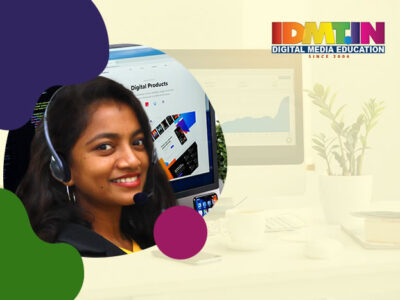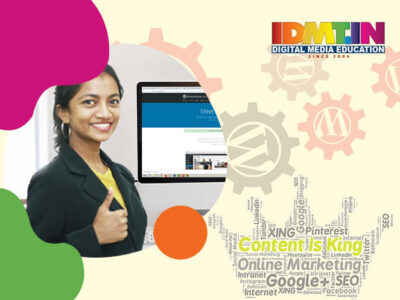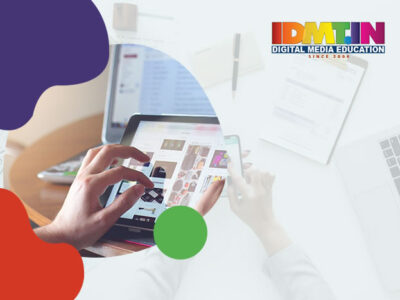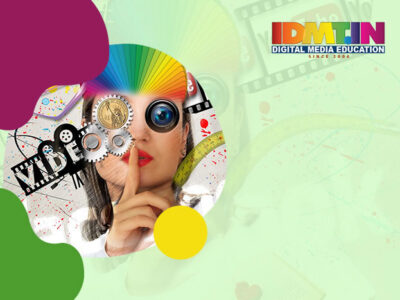Digital Journalism
- Home
- Courses
- Digital Journalism
- Digital Journalism
Digital Journalism
Professional Certified Digital Journalists (PCDJ) are sought after to report, generate content, manage web pages, create and edit audio, video, and graphics, craft press releases, enhance the company’s brand image, and manage the organization’s reputation.
Overview
A Professional Certified Digital Journalist (PCDJ) is a technology-based media professional proficient in various digital media tools and technologies. Media companies worldwide seek individuals with a versatile skill set, often referred to as “jacks-of-all-trades.” These professionals possess hands-on experience in both the technical and practical aspects of journalism. They are sought after to report, generate content, manage web pages, create and edit audio, video, and graphics, craft press releases, enhance the company’s brand image, and manage the organization’s reputation.
“NEW MEDIA or DIGITAL MEDIA” is an interactive form of Communication that uses the Internet, including Podcasts, RSS Feeds, Social Networks, Text Messaging, Blogs, Wikis, Virtual Worlds, and more!
Digital Media makes it possible for anyone to create, modify, and share content and share it with others, using relatively simple tools that are often free or inexpensive. All it requires is a computer or mobile device with Internet connectivity.
Digital Media tools can help you:
- CONNECT people with information and services.
- COLLABORATE with other people—including those within your organization or community.
- CREATE new content, services, communities, and channels of communication that help you deliver information and services.
Digital Media Technology is rapidly evolving within the media industry. It involves applying digital (computer) technology to mass communications. The Internet has emerged as a powerful communication medium, profoundly impacting society, commerce, and government. The inherent interactivity and immediacy of digital technology have transformed the models of media production and business. Traditional and new media intersect, influencing each other; this is known as media convergence. The goal is to empower citizens, especially the youth, with Information and Communication Technology (ICT) tools to equip them with employability skills for an emerging digital world. While Digital Media offers significant potential for Indian youth, many opportunities remain untapped due to various constraints inherent in the Indian context.
Digital Media Technology blurs time and space, as well as geographic and cultural distances. It immerses us in a global communication environment, thereby reshaping societies, economies, and mass media audiences. Media and the messages they convey are in a constant state of evolution. Those working in the media field must comprehend and adapt to these changes.

EXAMINATION
There will be no written theory examination for this program. All assignments and quizzes are to be conducted online inside the classroom. There will be at least seven hands-on sessions for each paper.
PARTICIPATIONS
It’s in the best interest of the student to contribute during in-class activities such as discussion, reflection, experience sharing, peer-to-peer review, etc.
GRADING POLICY
Final grades are performance-based and will be awarded based on the total number of points. They will be computed in the following manner:
- ABOVE 99% DISTINCTION
- 96-98% = A+
- 92-95% = A
- 89-91% = A-
- 86-88% = B+
- 82-85% = B
- 79-81% = B-
- 76-78% = C+
- 72-75% = C
- 66-68% = D+
- 63-65% = D
- 60-62% = D-
- Less than 60% = PASS
PROJECTS AND OTHER ACTIVITIES
All projects will have a detailed brief for requirements, due dates, assessment criteria, and resources. We will discuss each brief before the implementation. Unless indicated otherwise, projects are to be submitted digitally in Microsoft Word Format. All project due dates might change depending on the progress of the class. Students will be notified by mail or on the official website.
SOFTWARE AND HARDWARE REQUIREMENTS
Students enrolling in this program may carry their laptops to the class. Computers are provided in the lab. Computer systems can be used only through prior booking of lab time slots, approved by faculties. Students should have their USB drives for data storage and transfer purposes. Recommended size is at least 8 GB (Use only on written approval of the lab instructors. CDs/DVDs to store project data for submission purposes only.)
TEXTBOOK
There are no assigned textbooks for this program. Students will be provided with free electronic formats of the relevant books for all papers. Course materials will be provided at the end, and before the revision class of a particular module.
EMPLOYABILITY SKILLS
This program is a gateway to the first of two in a convergence journalism sequence in which students will learn to read, write, report, and present news for all major media platforms used in contemporary journalism. Through participation in this program, students will have the opportunity to develop knowledge, understanding, skills, and attributes that will be transferable and enhance the student’s employability.
These include:
- Understanding the roles of communication systems, an awareness of the economic forces that frame the media, cultural and creative industries, and the role of such industries in specific areas of contemporary political and cultural life.
- Understanding of media forms and genres, and how they organize understandings,meanings, and effects.
- Understanding the role of technology in terms of media production, access, and use.
- Critical evaluation the contested nature of some objects of study within the fields of communication and media, and the social and political implications of the judgments that are ma
- Critical appraisal of some of the widespread common-sense understandings and misunderstandings of communications, media, and culture; and the debates and disagreements they create.
- Understanding how media, cultural, and creative organizations operate and are managed.
- Retrieval and generation of information, and evaluation sources, in carrying out independent research.
- Working productively in a group or team, showing abilities at different times to listen, contribute, and lead effectively.
EMPLOYMENT OUTLOOK
The media profession changes as it is influenced by technology. The technology that was once handled by specialists and consultants, is now becoming part of all media personnel’s jobs. Magazines, television programs, and newspapers are being published on the Internet to “cross benefit” by having two media products. Media professionals must also understand some practical theories of new media technology. For example, print and broadcast journalism are changing as the length of the story is now less of an issue due to the incorporation of hyperlinking.
Some media professionals might choose to become technically fluent and produce new media. However, most media professionals can expect their job duties to rely massively on – experience in and knowledge of – practical uses of technology (technical literacy) i.e., in producing both traditional and new media.
As a result, Media companies across the globe are looking for people, who are jack- of-all (Jackal), meaning those who have hands-on experience of the technical as well as practical side of journalism. Media Companies are looking for personnel who can report, create content, maintain web pages, create, and edit video and graphic design, write press releases, and improve the company’s online image.
Digital Media Technology changes the job functions of most media professionals. The reason for this is the media convergence. Digital Media Technology also changes the production model under which mass communication has been governed. Traditional journalism, controlled by deadlines and space constraints, can now open into different models of storytelling without these limitations.
Henceforth, Media professionals of today and the future will need to be able to work in and produce multiple media. Those who work only in one medium, such as print, will be too highly specialized. Likewise, advertising, and public relations firms, that cater solely to Internet business, also stand to suffer from being too highly specialized. In either case, there is no “jackpot” in media specialization. Instead, the roles played by media professionals continue to evolve to include new characteristics that operate in a new landscape. A major change in the media landscape is that with the introduction of new media technology, particularly the Internet, owing to which the number of publishers has increased dramatically. The existence of more publishers naturally increases competition, which leads to faster production. In turn, faster production has led to controversies in journalism, especially when the speed of publication is emphasized; detrimental to adequate fact-checking. The speed emphasis can also take precedence over artful, disciplined communication.
CLASS FORMAT
Since this is primarily a hands-on project-based program, class activities will be in the following formats:
- Lecture and presentation
- Tool demonstration and hands-on session
- Group Discussion and review
- Open lab
- Quiz
- Project Work/Assignment
STUDENTS RESPONSIBILITIES
The students will have to agree to
- Have an open mind, try new things, and commit themselves to the program.
- Submit/present original work that was created by them for the class give due credits or cite all the references.
- Communicate to each other in advance in person, or by using email for any special learning needs or questions about this program.
- Be considerate of others’ right to learn: be punctual; turn off or put cell phones on vibration mode; respect each other’s opinions and diverse backgrounds; use training computers for activities related to this program etc.
- No drinks or food near computers or classroom are allowed
- Use word processing tools to check spelling, and grammar in preparing write-ups before posting them on the internet.
COURSE SCHEDULE
This schedule might change with fair advance notice to correspond with student learning progress. Updates will be announced in class, and posted on the program website and via email.
TRAINER(S)
The core technical trainers for this program will be from various organizations IDMT has strategic partnerships with some media companies and institutes offering full-time journalism training programs to provide their key personnel as guest faculty.
CERTIFICATE
The program is not affiliated/approved with any University/Government agencies. These programs are industry-endorsed. For this program, New Media Center has made strategic partnerships with media companies in regional, national, and international. The certificates will be signed and endorsed by all the media alliance organizations.
DIPLOMA
After completion of the PCDJ programs, all students will be awarded a Professional Certificate in paper format and a pocket-size Diploma Card (Digital Plastic Card).
MEMBERSHIP
All students will be given a free life membership card of the “WHATSTHE.NEWS”.
INTAKE
The total intake for both programs will be 64, out of which 12 seats are reserved for scholarship and organization-sponsored students.
PLACEMENT
Placement assistance will be given to all the students, depending on their merits. As this is an industry-endorsed program, all students will be absorbed by the different media organizations locally, nationally, or internationally.
MEDIA CARD
After completion of the training program, all students will be given a MEDIA CARD from WHATSTHE.NEWS – India’s upcoming Community News Syndication service. WHATSTHE.NEWS is a 24×7 and 3600 web news channel syndication portal for the people – by the people.
DISCLAIMER
The curriculum for both programs are approved and registered by the International Curriculum Consortium under the International Copyright & Intellectual Property Rights Act of various countries. Any organization or person, using any content of our programs will be prosecuted.
NEED ANY ASSISTANCE?
+91 87630 63456
Curriculum
Instructor
Reviews
You May Like
Digital Management Applications
A Digital Marketing Applications Specialist is a technology based marketing support Professional. The DMA Professional is conversant with various digital engineering, technologies & marketing...
Digital Content Marketing with SEO
A Digital Marketing Applications Specialist is a technology based marketing support Professional. The DMA Professional is conversant with various digital engineering, technologies & marketing...
Digital Marketing Applications
A Digital Marketing Applications Specialist is a technology based marketing support Professional. The DMA Professional is conversant with various digital engineering, technologies & marketing...
Digital Media Conversion
Welcome to a world where your mobile can take a video, your money can be stored on a piece of plastic, and the latest...
Digital Multimedia Technology
Welcome to a world where your mobile can take a video, your money can be stored on a piece of plastic, and the latest...
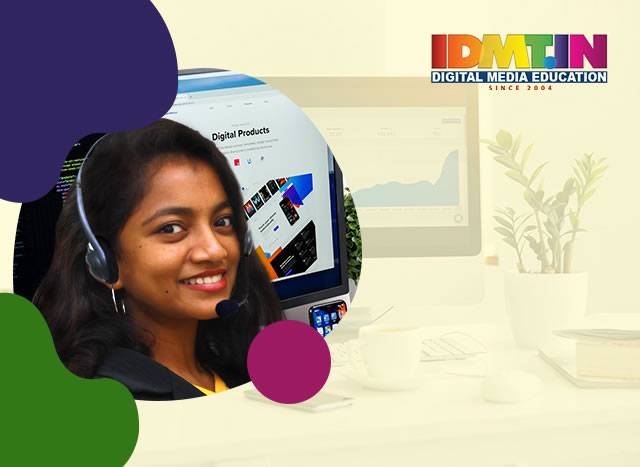
Course Features
- Lectures 111
- Quizzes 0
- Duration 12 Months
- Skill level All levels
- Language English, Hindi, Odia
- Students 0
- Assessments Yes

